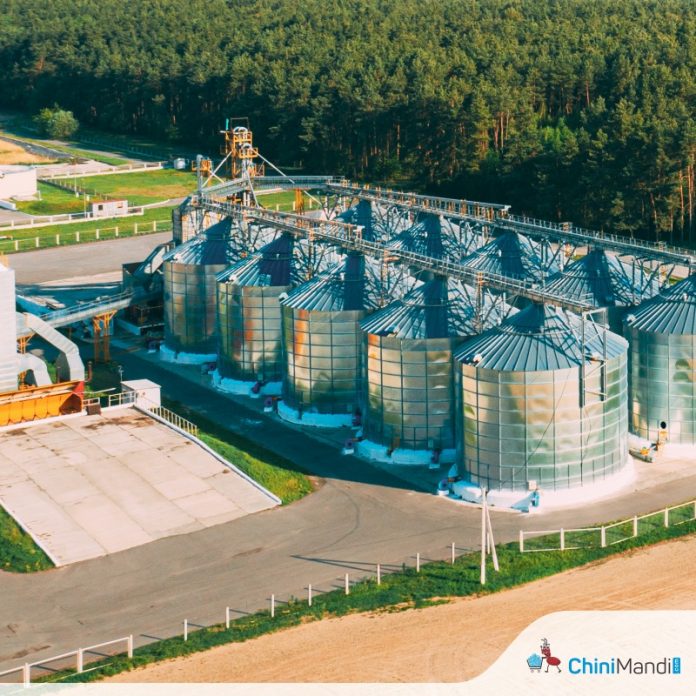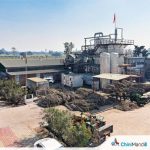Marked by disruptive forces of digital and climate change, the world is standing at an inflection point and India has taken a bold step towards creating a ‘Viksit Bharat’, riding on the back of a sustainable economy. For a growing nation like India, achieving energy security and transitioning to a thriving low carbon economy is an imperative to realise a sustainable future. A future that’s self-reliant and one that positions it firmly amongst the most advanced and developed economies in the world.
Over the past few years, the Indian Government has taken several steps to leapfrog the country to achieve its net-zero goals by 2070. Amidst these steps, Compressed Biogas (CBG), Green Hydrogen, and Sustainable Aviation Fuel (SAF) are at the forefront of this green revolution. These clean energy solutions hold immense potential to support the country’s decarbonization goals while fostering energy security and self-reliance.
Compressed Biogas: Turning Waste into Wealth
India’s energy landscape has evolved significantly with renewable energy, particularly CBG which is derived from organic waste through anaerobic digestion, playing a crucial role in addressing waste management challenges and reducing dependency on imported CNG. Among all the states in India, Uttar Pradesh, especially its western districts like Muzaffarnagar, Meerut, Saharanpur, Bijnor, Bulandshahar, and Aligarh, stand out for its potential to generate 24% of the nation’s CBG, as per the Delhi-based think tank Centre for Science and Environment (CSE).
The industry got a major push by the introduction of SATAT scheme in 2018. As of March 2023, 58 CBG plants were operational nationwide. Additionally, the Government allocated ₹ 10,000 crore in the Union Budget 2023- 24 for the GOBARdhan scheme, aiming to establish 500 new bio-CNG plants, including 200 CBG plants across urban and community locations. In the recent budget of 2025, the Government announced that in the next two
years, 1 crore farmers across the country will be initiated into natural farming. This will help the CBG sector to enhance the financial attractiveness due to assured disposal of the liquid fertilizer.
However, the CBG sector faces challenges such as limited bio-slurry uptake, inconsistent gas purchases by oil and gas companies, underutilisation of plant capacity, a shortage of skilled personnel, and financing difficulties. We can overcome these challenges by promoting bio-slurry benefits, ensuring consistent gas uptake, addressing CNG pipeline proximity, establishing CBG training centers, and introducing a Government-backed guarantee programme for financing alongside the centralisation of CBG project applications to ensure transparency and efficiency in the financing process.
Green Hydrogen: Fuelling the Future
Simultaneously, Green Hydrogen is gaining global traction as a pivotal clean fuel for the future. Produced from renewable resources such as solar and wind, Green Hydrogen holds significant promise in meeting future energy demands sustainably while reducing emissions in hard-to-abate sectors such as Steel, fertilizers, Refinery, Cement & Mobility, on the path to Net-Zero.
India’s $2.4 billion National Green Hydrogen Mission launched in 2023 targets achieving 5 million metric tonnes (MMT) of annual green hydrogen production capacity and 60 GW of electrolyser capacity by 2030, aiming to establish India as a global leader in green hydrogen adoption. The Strategic Interventions for Green Hydrogen Transition (SIGHT) Programme, worth $2.12 billion, provides financial incentives for green hydrogen production and electrolyser manufacturing.
The economic potential of green hydrogen in India is significant, projected to create millions of jobs, attract substantial investments, and reduce dependence on fossil fuel imports, contributing to overall energy security and Aatmanirbhar Bharat (self-reliant India) goals. However, challenges persist in its adoption, including high production costs, uncertain demand, limited water resources, complex infrastructure needs, and storage issues. Addressing these hurdles involves reducing costs through technology and local manufacturing, stimulatin demand with strong Government incentives, addressing water scarcity, improving transportation methods, and advancing storage solutions.
India’s renewable energy potential supports green hydrogen growth, but rapid capacity expansion is crucial. The Government has introduced multiple Production Linked Incentive (PLI) schemes across sectors like Solar, Wind, Biomass, Hydro, and Pumped Storage. Battery Energy Storage Systems (BESS) ensure uninterrupted renewable energy supply for green hydrogen production. Pilot projects schemes have already been launched for use of
hydrogen in Steel, Shipping and Mobility sector and several others are in pipeline. Efforts continue to build a robust hydrogen ecosystem with both supply and demand-side incentives such as PLIs for hydrogen and electrolyser production, Inter-State Transmission Charges (ISTS) waivers, green corridors for energy transmission, hydrogen hubs at ports, and subsidies from state governments on land, approvals, capex, and renewable power
to bolster production efforts.
Sustainable Aviation Fuel: Flying Towards a Greener Sky
Aviation accounts for 2.5% of global CO₂ emissions and SAF is another promising way to lower carbon emissions. The sector has committed to achieving net-zero emissions by 2050. India plans to mandate 1% SAF use for domestic flights by 2025, using sugarcane molasses as feedstock, with potential to produce 19-24 million metric tonnes annually by 2030 against a projected 8-10 million metric tonnes requirement.
Scaling up SAF production in India can yield numerous macroeconomic benefits such as reducing greenhouse gas emissions, improving air quality, supporting farmers, enhancing energy security, creating green jobs, and promoting sustainable development. Globally, the SAF industry is gaining traction, with leading regions and countries like the European Commission planning a SAF blending mandate by 2025 under the “European Green Deal”. Norway mandates SAF at 0.5% of annual fuel use, targeting 30% by 2030. The Netherlands, Sweden, the UK, California, and others are also developing their own SAF policies.
However, India’s starting point for SAF adoption differs significantly from European nations. India faces challenges in the maturity of its SAF supply chain, high costs, lower demand for renewable products, a complex certification process, and less willingness among customers to pay for carbon reduction. Given the abundance and low cost of fossil jet fuel in India, transitioning to SAF will require Government support to align with CORSIA standards
and foster collaboration among stakeholders such as cities, states, national regulators, legislators, refinery owners, investors, fuel vendors, airlines, and their commercial and private customers to achieve a zero-carbon aviation sector.
Other than CBG, Green Hydrogen and SAF, the Government is also emphasising on other renewable energy sources such as solar, thermal, and nuclear laying out a comprehensive roadmap for a ‘Viksit Bharat’. In Budget 2025, the Government announced bringing a policy for promoting pumped storage projects aims to enhance electricity storage and integrate renewable energy into the energy mix more effectively. This approach will address the variable and intermittent nature of renewable energy, ensuring a stable and reliable energy supply.
The Government will also partner with the private sector to advance nuclear energy through the establishment of Bharat Small Reactors and the development of Small Modular Reactors and other nuclear technologies, supported by R&D funding. Indigenous technology for Advanced Ultra Super Critical (AUSC) thermal power plants will be utilized in a new 800 MW plant by NTPC and BHEL, with Government fiscal support. Additionally, a roadmap will transition ‘hard-to-abate’ industries from energy efficiency to emission targets, integrating them into the Indian Carbon Market through appropriate regulations. Furthermore, the increased focus on climate finance and tools such as carbon credits would enhance the speed of green transition through improved viability of the Bioenergy sector.
Pioneering Sustainability: Triveni Engineering’s Commitment
Companies such as Triveni Engineering & Industries Limited are contributing to India’s energy production. The Company has positioned itself as a key partner in the nation’s efforts to achieve self-sufficiency, focusing on sustainable energy solutions across sectors like ethanol. The Company has been actively expanding its ethanol production capacity, recently commissioning a 200 KLPD multi-feed distillery, increasing its total distillation
capacity from 660 KLPD to 860 KLPD. Triveni is also among the first organizations in the country to use maize as a feedstock for ethanol production, supplying maize-derived ethanol to Oil Marketing Companies (OMCs). Triveni’s strategic priorities align with India’s roadmap for self-reliance, emphasising the creation of a sustainable and self-reliant future for generations to come.
As India navigates its energy transition, the synergistic development of CBG, green hydrogen, and SAF holds the promise of a cleaner, more self-reliant, and sustainable future. With continued policy support, technological advancements, and collaborative efforts, these clean energy sectors can collectively contribute to India’s ambitious decarbonization targets.
















